There can be your advertisement
300x150
How to Properly Arrange a Bathroom: 6 Tips from an Expert
We tell you which mistakes are unacceptable when renovating a bathroom
What to do first: install the bathtub or lay tiles? What floor covering is best for a bathroom? These and other questions arise when homeowners are setting up a bathroom. Mistakes can be very expensive, and we will help you avoid them. Together with expert Evgeny Shamin, we've collected valuable tips worth keeping in mind.
Subscribe to our Telegram channel.
Evgeny Shamin — the best DIY blogger on Instagram 2019, builds and renovates homes for people from Forbes
Do not use laminate or parquet in the bathroom
Most people use the "wet" area to its fullest extent — they pour water, exit the shower with wet feet. Laminate and parquet do not like moisture, so I strongly recommend using ceramic granite or quartz vinyl tiles — floor coverings that are not afraid of water.
If you buy unfinished parquet that will later be coated with lacquer (e.g., polyurethane), then moisture for the floor is not a problem. Polyurethane and marine lacquer are not damaged even by pet claws: we use this method in apartments with children or pets, but people want natural parquet, engineered wood, or solid wood.
 Design: Anton Bitipash
Design: Anton BitipashFor walls, I recommend using ceramic granite. However, trends are changing: ceramic granite or marble as a surface finish are now chosen only in the shower area, and beyond that, walls are painted or decorated with decorative stucco. These options are possible, but surfaces must be protected with a protective lacquer to avoid water droplets. Even with washable paint, color fades in areas frequently wiped with towels or cloths due to water contact.
Do not block access to inspection hatches under the bathtub
Under the bathtub, there is a drainage system. Over time, the drain gets clogged: to clear it, one must crawl under the bathtub, shut off the system from the tub, and fix the blockage. If you simply cover the inspection hatch with tiles and don’t leave a passage for hidden installation, the drain will clog very quickly, and water won't drain. Drain cleaning products won’t help here.
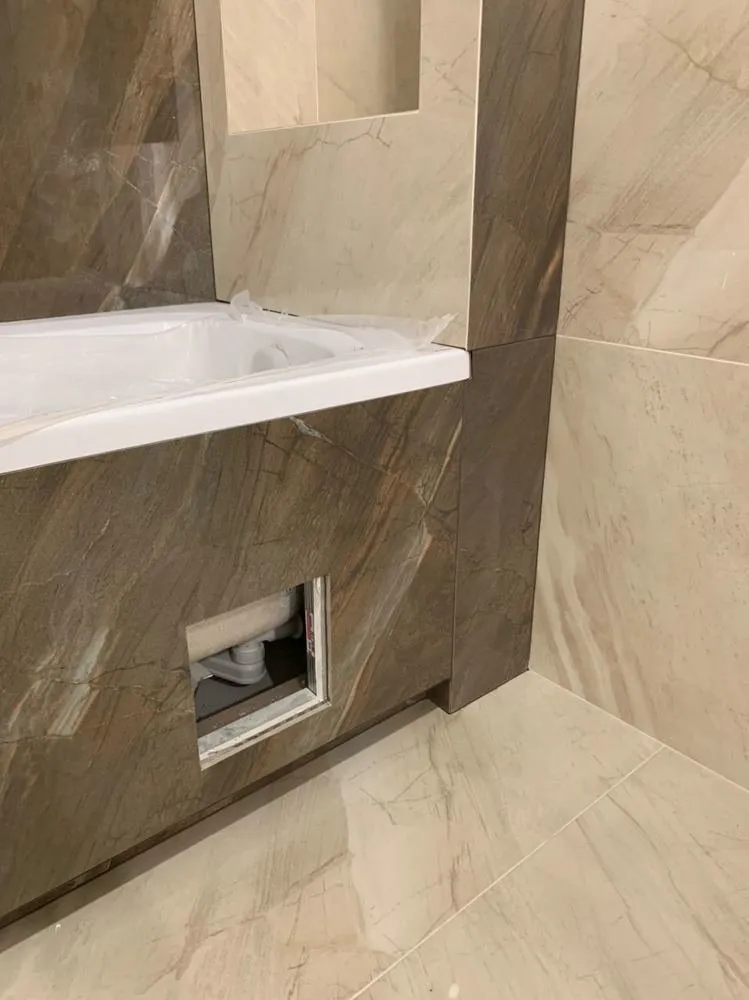 Photo: Evgeny Shamin
Photo: Evgeny ShaminWhen there is a hatch (at least 20x30 cm), you can easily open it and solve the issue. It’s better to install hidden mounting hatches so that tiles can be laid over them and they are masked — regular plastic hatches stand out and cheapen the interior.
Install the bathtub first, then lay tiles
Many craftsmen suggest laying tiles first and then placing the bathtub. Why recommend this approach? First, it's much easier. Second, when installing the bathtub before laying tiles, it must be covered and a rigid base installed above for workers to stand on. This creates many cuts and waste of time, which people want to save.
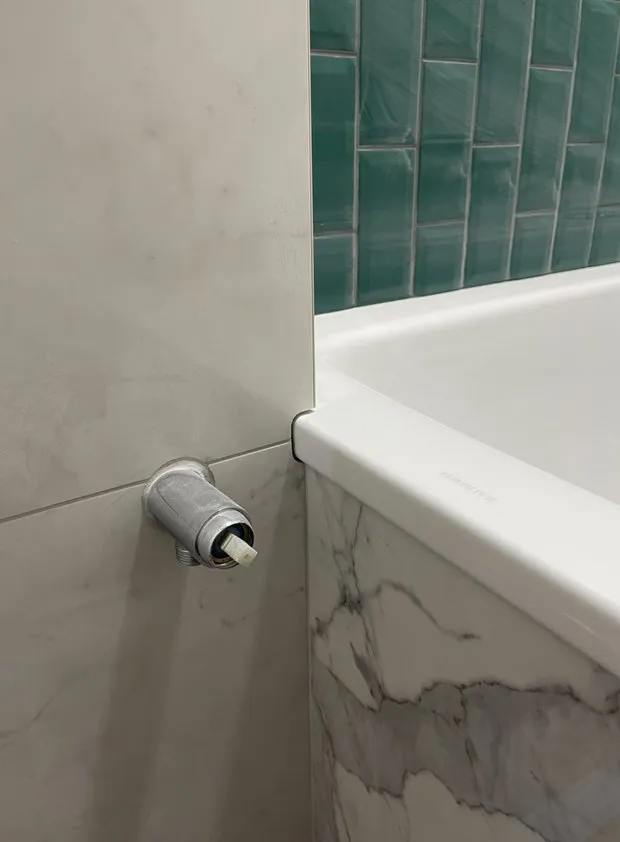 Photo: Evgeny Shamin
Photo: Evgeny ShaminIf the bathtub is installed after tile laying, gaps appear: these need to be covered somehow. You can't just pour a lot of silicone — over time, it darkens, yellows, or grows mold. Some use baseboards or corner pieces that fall off and lose their appearance. The right solution: install the bathtub first, then lay tiles with a 1–1.5 mm gap between the tub and tiles, filling all gaps with flexible grout — this looks beautiful and elegant.
Properly plan waterproofing in "wet" zones
If the bathroom walls are finished with gypsum plaster, they must be covered with waterproofing. Gypsum boxes should also be covered with waterproofing. Although gypsum board is moisture-resistant, its exposed edges can absorb moisture easily.
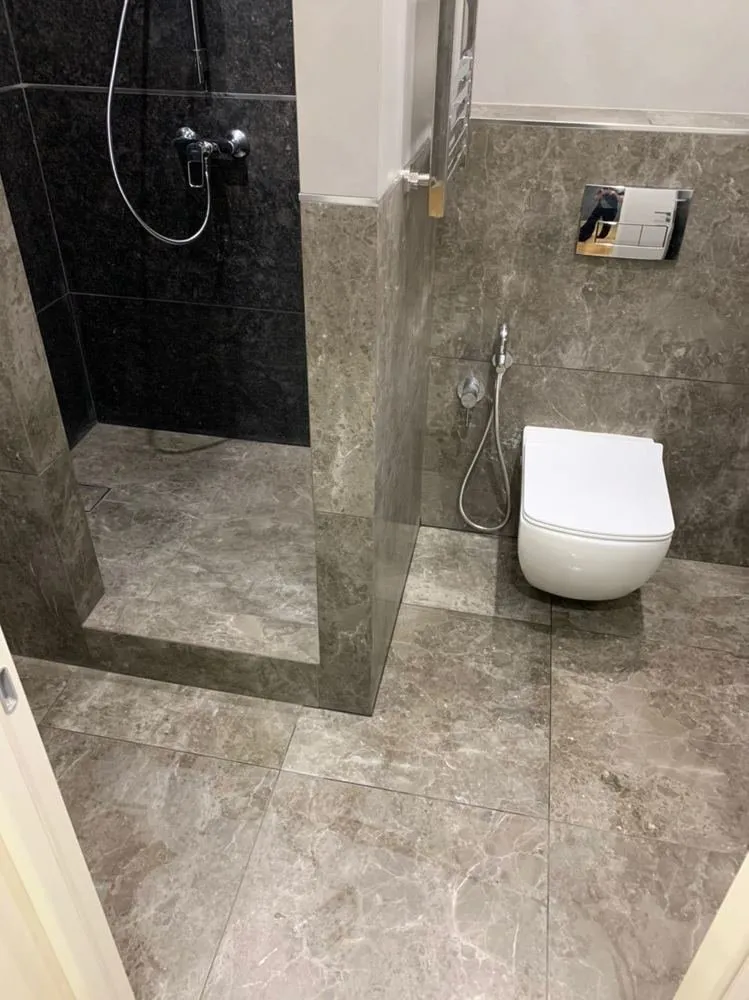 Photo: Evgeny Shamin
Photo: Evgeny ShaminIf you lay ceramic granite or tiles in the shower area, tiles still move — grout can crumble, moisture gets under the surface, and over time, the tiles swell and fall off, risking flooding neighbors. With proper full waterproofing, seal all internal and external joints with special waterproof tape, and the wall-to-floor joint. Then apply a second coat of waterproofing. Even if tiles shift, the waterproof tape will contain them — you and your neighbors can sleep peacefully.
Choose a towel rack correctly
If you need to warm up the bathroom (e.g., if there is no heated floor), it's better to use water-based towel racks. However, keep in mind that over time, they may leak: if no one is home, this can affect both the apartment owner and neighbors. An electric towel rack does not provide warmth in the bathroom — it’s only for drying towels.
 Design: Evgenia KozyuKova
Design: Evgenia KozyuKovaInstall a wall-mounted toilet
In modern times, people are moving away from floor-standing toilets to avoid overloading the space. Instead of a cistern, they install a concealed system, which is enclosed with gypsum board, and a cabinet is custom-made above to hide hygiene products. Only the toilet remains visible, visually occupying much less space. Cleaning becomes easier too — dusting under the toilet is much simpler than with a floor-standing model, where hard-to-reach spots are often inaccessible.
 Photo: Evgeny Shamin
Photo: Evgeny ShaminWall-mounted toilets have another advantage. People vary in height, and all floor-standing toilets are standard height — tall people may feel uncomfortable. The installation allows for adjustable toilet height.
Photo on cover: Elena Trinitatskaya's project
More articles:
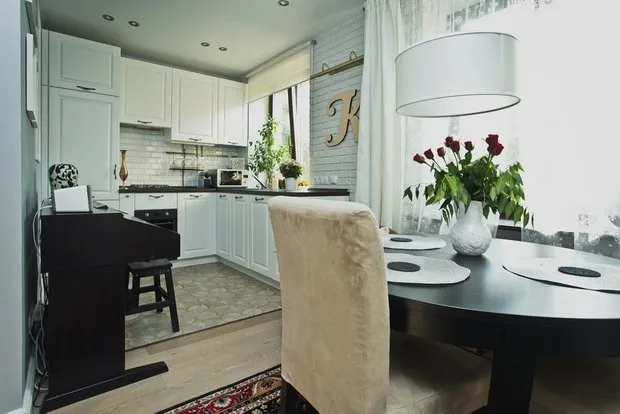 Modern Khrushchev Apartment for a Family with Smart Storage and 'Smart' Electricity
Modern Khrushchev Apartment for a Family with Smart Storage and 'Smart' Electricity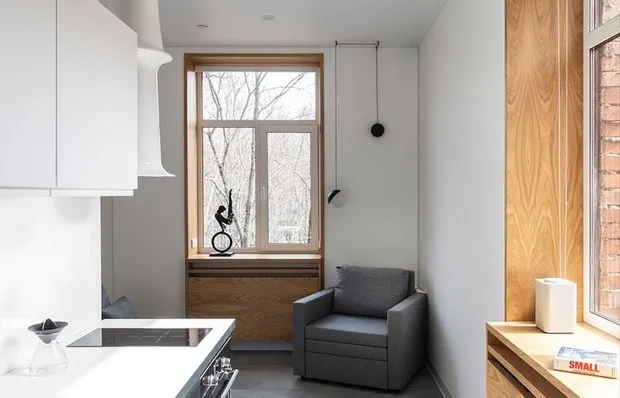 How to Create an Indestructible Kitchen in Just 3 Square Meters
How to Create an Indestructible Kitchen in Just 3 Square Meters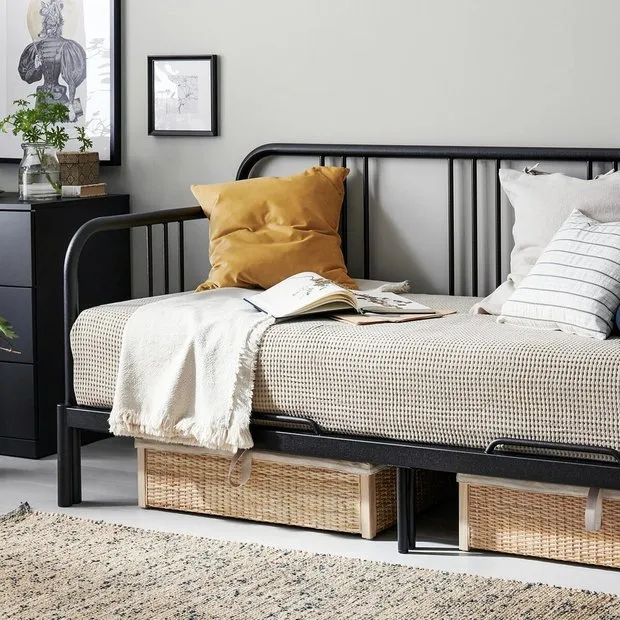 Where and How to Store Pillows and Blankets: 7 Tips from a Space Organizer
Where and How to Store Pillows and Blankets: 7 Tips from a Space Organizer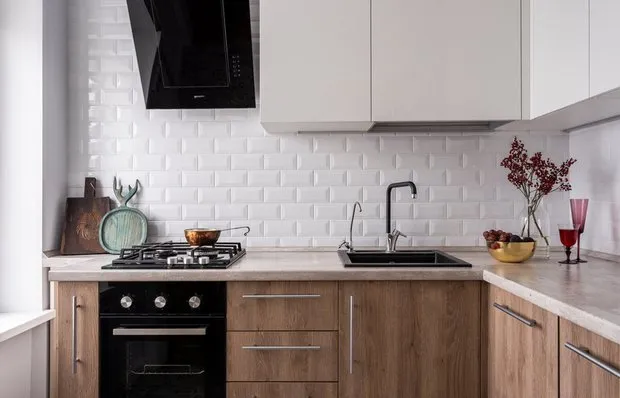 Expanded Bathroom in Khrushchyovka by Using the Corridor Space
Expanded Bathroom in Khrushchyovka by Using the Corridor Space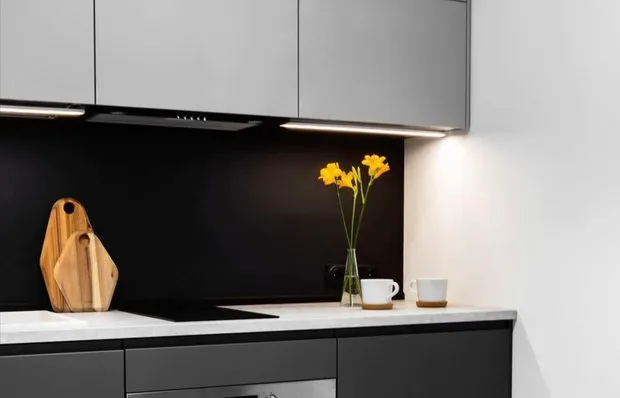 How a Designer Furnished His Small 32 m² Apartment and How Much Did the Renovation Cost
How a Designer Furnished His Small 32 m² Apartment and How Much Did the Renovation Cost How to Keep a Flower Bouquet Fresh for a Long Time: Tips and Recommendations
How to Keep a Flower Bouquet Fresh for a Long Time: Tips and Recommendations Simple Tips to Keep Flower Bouquets Fresh Longer
Simple Tips to Keep Flower Bouquets Fresh Longer You Don't Need to Fear Black Color in Bedroom: 6 Beautiful Proofs
You Don't Need to Fear Black Color in Bedroom: 6 Beautiful Proofs